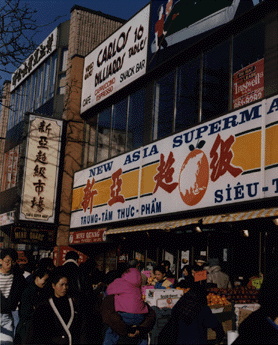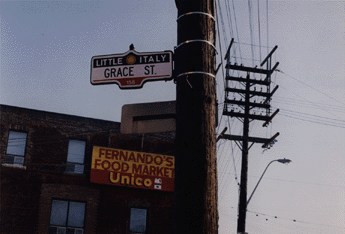Topic #5 Canada
Today

Time: 2-5 period(s)
Objectives:
- Students will recognize that Canada is a
multicultural country made up of people with a
variety of languages, religions, and customs.
- Students will learn to value the diverse,
dynamic, and changing cultures of Canada's Native
peoples, the founding peoples, and subsequent
immigrants, which have shaped the Canadian
identity.
- Students will recognize the contributions made by
people from other countries to Canadian society.
- Students will be able to determine the value that
differences in culture bring to Canada.
- Students will be able to apply simple statistical
analysis tools to analyze a set of data.
- Students will learn to evaluate recorded
information and assess the reliability of
specific sources of information.
- Students will be able to speak coherently and
correctly about the topic of cultural diversity
in Canada.
- Students will become comfortable with
interpreting and using information from the World
Wide Web.
Resources:
- Digital Collections: Magic Assembly:
Storefronts to Culture
( http://www.schoolnet.ca/collections/magic/mhome.html
)
- Canadian Geography textbook.
Purpose: To learn more about Canada's
multicultural society, the benefits and contributions
that various cultures bring to Canada.
Ideas:
- Have students use the site Magic Assembly:
Storefronts to Culture
( http://www.schoolnet.ca/collections/magic/mhome.html
) to examine the different cultures that exist in
Canada today. Have students complete the
following questions based on the site they have
chosen: a) What is the cultural group in this
area? b) How do you know this? c) What language
do you think is spoken in the store? d) What
types of items do you think would be found in
this store? e) What are some of the other stores
around it? f) Do any of them not seem to fit?
Why? and g) What do you think is a typical
conversation in this store? Write a script. If
time permits, have students look at several
pictures available on the site, answer the
question(s) asked and reflect on the quote given.
They are excellent questions and quotes that will
make students think. Also, the articles are
interesting to read for older students or for a
longer project and could even be included in the
students' scrapbooks.
- Have students examine slides of different ethnic
communities or the storefronts in the digital
collection. What do the students notice? All the
immigrants from one culture or of one ethnic
background, congregate together in one location.
This creates Chinatown, Little Italy and other
clusters of culture. Often these areas are
recognized because of the different languages on
signs. However, the clothing the people are
wearing, the products available in the stores and
the languages being spoken will also tell people
that they are in a culturally defined area or an
ethnic neighbourhood.

- Discuss with students why different cultures
cluster together in Canada. Discuss any areas
that the students can think of in their area. Do
any of the students live in one of these areas?
By living in a location with people from the same
cultural group, immigrants avoid the feelings of
isolation and discomfort that can lead to culture
shock. Culture shock is the overwhelming feeling
that immigrants feel when they encounter the
differences between what they are used to and
what they face here such as new customs, new
money, new laws, new dress and behavior, and
often a new language. Discuss how ethnic
neighbourhoods like Chinatown provide support for
immigrants.
- Have students examine the ethnic composition of
immigrants to Canada (available in Canada:
Exploring New Directions and through
Statistics Canada) in 1981 and 1986. If access to
E-Stat is available (on CD-ROM or on the StatsCan
Web site), this is a good activity for students
to do on the computer using E-Stat. Have students
discuss the reasons why think the ethnic
composition of immigrants to Canada is changing.
- Discuss with students that cultural diversity was
not officially recognized until Canada's 100th
birthday, with the passing of the first
discrimination-free immigration act. The
importance of bilingualism was recognized in 1969
and in 1971, Canada became officially
multicultural.
- In a circle with everyone taking his/her turn,
have students discuss how their lives have been
enriched and challenged by their differences or
the differences of others. Have each student
reflect on these discussions in his/her journal,
what can she/he do to have more positive
experiences and fewer negative experiences, what
does he/she do that may cause others to have
negative experiences. In the circle again,
discuss as a class what they can do to create a
more positive atmosphere for all Canadians.
Evaluation
- Mark students answers to Magic Assembly:
Storefronts to Culture Assignment.
- Student participation in class discussions can be
evaluated.
- The E-Stat assignment can be marked.
|
